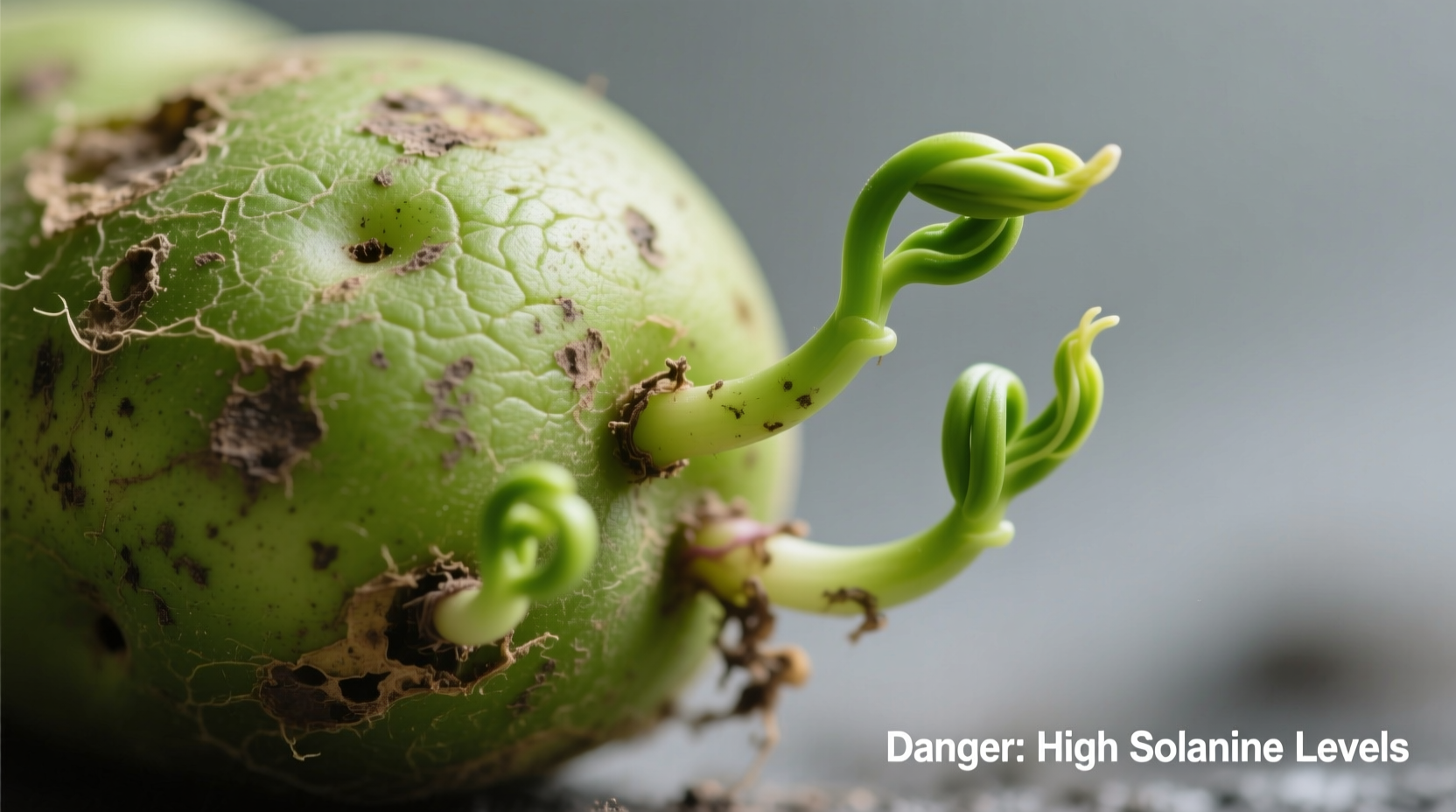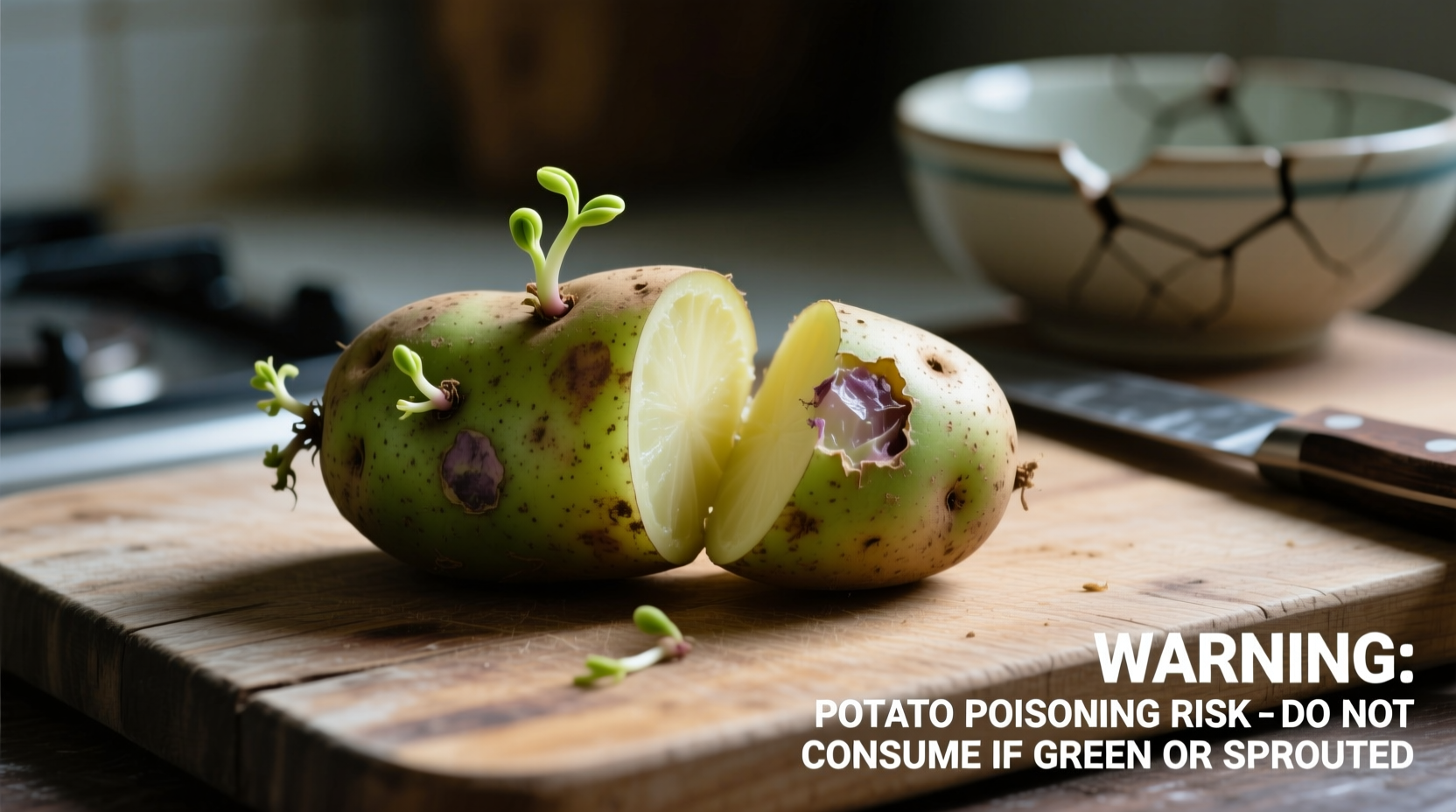Understanding Potato Poisoning: The Hidden Danger in Your Pantry
While potatoes are a staple food worldwide, few people realize that under certain conditions, these common vegetables can become unexpectedly dangerous. Potato poisoning—caused by naturally occurring toxins called glycoalkaloids—is a genuine food safety concern that affects hundreds of people annually.
What Causes Potato Poisoning?
Potatoes naturally produce two toxic compounds: solanine and chaconine. These glycoalkaloids serve as the plant's defense mechanism against pests and disease. Normally present in safe, minimal amounts, these toxins can reach dangerous levels when potatoes:
- Develop green patches from light exposure
- Sprout extensively
- Experience physical damage or bruising
- Are stored improperly for extended periods
According to the U.S. Food and Drug Administration, solanine levels above 20 mg per 100 grams of potato are considered potentially harmful. Green potatoes can contain 250-1,000 mg per 100 grams—well above the safety threshold.
| Potato Condition | Solanine Level (mg/100g) | Risk Level |
|---|---|---|
| Fresh, properly stored | 2-13 | Safe |
| Slight greening | 20-50 | Moderate risk |
| Extensive greening | 50-250 | High risk |
| Severely sprouted/green | 250-1000 | Dangerous |
Symptoms and Timeline of Potato Poisoning
Understanding the progression of symptoms is critical for timely intervention. Symptoms typically appear 8-12 hours after consumption but can begin as soon as 10 minutes or as late as 24 hours.
Early symptoms (within first 12 hours):
- Nausea and stomach cramps
- Vomiting and diarrhea
- Headache and dizziness
- Fever and sweating
Advanced symptoms (12+ hours after consumption):
- Neurological disturbances
- Visual disturbances
- Difficulty breathing
- In severe cases, coma or death
The Centers for Disease Control and Prevention reports that most cases resolve within 24-48 hours with supportive care, but severe cases may require hospitalization. Children are particularly vulnerable due to their smaller body mass.

Which Potatoes Pose the Greatest Risk?
Not all potatoes carry the same risk. Certain varieties and conditions significantly increase glycoalkaloid levels:
- Green potatoes: Chlorophyll indicates light exposure, which triggers solanine production
- Sprouted potatoes: Sprouting activates defense mechanisms that increase toxin production
- Bitter-tasting potatoes: A strong indicator of high glycoalkaloid content
- Old or damaged potatoes: Physical damage and aging increase toxin levels
According to research published in the Journal of Agricultural and Food Chemistry, certain potato varieties naturally contain higher baseline levels of glycoalkaloids. Russet potatoes generally have lower levels than varieties like Katahdin or Shepody.
Preventing Potato Poisoning: Practical Safety Measures
The good news is that potato poisoning is entirely preventable with proper handling:
Proper Storage Techniques
- Store potatoes in a cool, dark place (45-50°F or 7-10°C)
- Avoid refrigeration, which can increase sugar content and affect cooking
- Never store potatoes near onions, which accelerate sprouting
- Use breathable containers like paper bags or baskets, not plastic
Safe Preparation Practices
- Peel potatoes thoroughly, removing all green areas (toxins concentrate in the skin)
- Cut away sprouts and the "eyes" with a generous margin
- Discard potatoes with extensive greening or strong bitter taste
- Don't rely on cooking to eliminate toxins—solanine isn't destroyed by heat
What to Do If You Suspect Potato Poisoning
If you or someone else shows symptoms after eating potatoes:
- Stop consuming the potatoes immediately
- Drink clear fluids to prevent dehydration from vomiting
- Contact Poison Control at 1-800-222-1222 (US) or your local emergency number
- Save a sample of the potato for potential testing
- Seek medical attention if symptoms are severe or worsening
Medical treatment typically involves supportive care—managing symptoms while the body eliminates the toxins. In severe cases, activated charcoal may be administered to reduce absorption.
Common Misconceptions About Potato Safety
Several myths persist about potato safety that could put consumers at risk:
- Myth: Cooking destroys all potato toxins
Fact: Solanine is heat-stable and not significantly reduced by cooking - Myth: Only green potatoes are dangerous
Fact: Potatoes can have high toxin levels without visible greening - Myth: Peeling removes all toxins
Fact: While peeling helps, toxins can penetrate beneath the skin - Myth: Organic potatoes don't contain solanine
Fact: All potatoes produce these natural defense compounds
When to Discard Potatoes: Clear Safety Guidelines
Use these criteria to determine if potatoes should be discarded:
- More than 25% of the surface is green
- Strong bitter taste when raw (test a tiny piece)
- Extensive sprouting with long sprouts
- Soft, wrinkled texture indicating advanced deterioration
- Mold growth beyond small isolated spots
When in doubt, throw it out. The risk of potato poisoning isn't worth trying to salvage questionable potatoes.
Special Considerations for Vulnerable Populations
Certain groups face higher risks from potato poisoning:
- Children: Lower body weight means smaller toxic doses
- Pregnant women: Potential risk to developing fetus
- Immunocompromised individuals: Reduced ability to process toxins
- People with digestive conditions: May experience exacerbated symptoms
For these groups, extra caution is warranted. Consider avoiding potatoes with any signs of greening or sprouting.
Real-World Cases and Incidence Rates
While comprehensive global data is limited, several notable cases illustrate the real risks:
- A 1979 incident in Scotland affected 78 schoolchildren who ate potatoes with solanine levels exceeding 280 mg/100g
- The CDC reports sporadic cases annually in the United States, often linked to home-stored potatoes
- A 2018 study in the Journal of Toxicology documented 15 cases over 5 years in a single hospital
Most cases are mild and resolve without hospitalization, but severe cases requiring medical intervention do occur.
Safe Potato Consumption: Finding the Balance
Don't let concerns about potato poisoning eliminate this nutritious food from your diet. Potatoes provide valuable vitamins, minerals, and fiber when properly handled. By following safe storage and preparation practices, you can enjoy potatoes with minimal risk.
Remember that the risk comes from improperly stored or prepared potatoes, not potatoes themselves. With proper knowledge and precautions, you can safely enjoy this versatile food staple.











 浙公网安备
33010002000092号
浙公网安备
33010002000092号 浙B2-20120091-4
浙B2-20120091-4